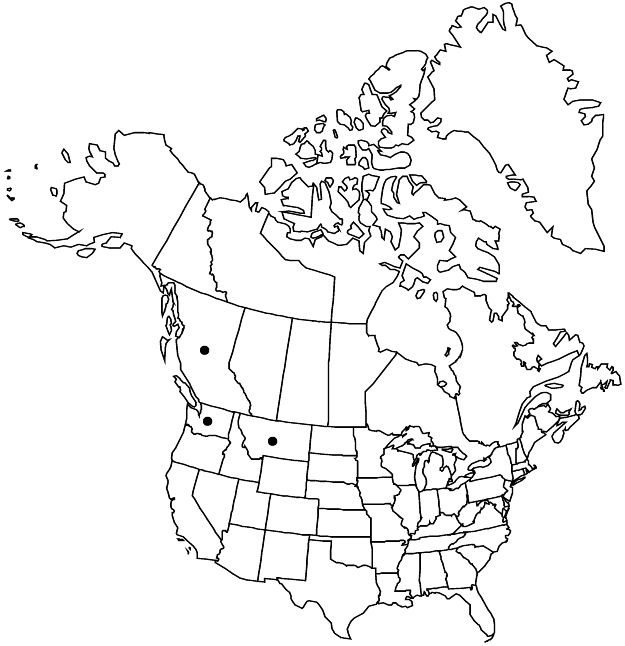Difference between revisions of "Crataegus phippsii"
Sida 18: 185, figs. 7, 9a–c. 1998.
FNA>Volume Importer |
imported>Volume Importer |
||
| (6 intermediate revisions by 2 users not shown) | |||
| Line 27: | Line 27: | ||
|elevation=300–700 m | |elevation=300–700 m | ||
|distribution=B.C.;Mont.;Wash. | |distribution=B.C.;Mont.;Wash. | ||
| − | |discussion=<p>Crataegus phippsii is found from the Okanagan Valley, southern British Columbia and northwestern Washington, to near Flathead Lake, Montana.</p><!-- | + | |discussion=<p><i>Crataegus phippsii</i> is found from the Okanagan Valley, southern British Columbia and northwestern Washington, to near Flathead Lake, Montana.</p><!-- |
| − | --><p>Crataegus phippsii is one of the more distinctive North American hawthorns and does not appear to be closely similar to any other known in the west. The plants are large, somewhat reminiscent of C. mollis in foliage, habit, and pubescence; in its fruit (red changing to purple to black) there is a color change similar to those in other species in this series. The bracteoles are smaller than in the mollis group, caducous and membranous, and bright crimson when fresh. The light gray bark flakes off in long narrow strips, which is unusual in Crataegus.</p> | + | --><p><i>Crataegus phippsii</i> is one of the more distinctive North American hawthorns and does not appear to be closely similar to any other known in the west. The plants are large, somewhat reminiscent of <i>C. mollis</i> in foliage, habit, and pubescence; in its fruit (red changing to purple to black) there is a color change similar to those in other species in this series. The bracteoles are smaller than in the mollis group, caducous and membranous, and bright crimson when fresh. The light gray bark flakes off in long narrow strips, which is unusual in <i>Crataegus</i>.</p> |
|tables= | |tables= | ||
|references= | |references= | ||
| Line 37: | Line 37: | ||
-->{{#Taxon: | -->{{#Taxon: | ||
name=Crataegus phippsii | name=Crataegus phippsii | ||
| − | |||
|authority=O'Kennon | |authority=O'Kennon | ||
|rank=species | |rank=species | ||
| Line 52: | Line 51: | ||
|publication year=1998 | |publication year=1998 | ||
|special status=Endemic | |special status=Endemic | ||
| − | |source xml=https:// | + | |source xml=https://bitbucket.org/aafc-mbb/fna-data-curation/src/2e0870ddd59836b60bcf96646a41e87ea5a5943a/coarse_grained_fna_xml/V9/V9_855.xml |
|subfamily=Rosaceae subfam. Amygdaloideae | |subfamily=Rosaceae subfam. Amygdaloideae | ||
|tribe=Rosaceae tribe Gillenieae | |tribe=Rosaceae tribe Gillenieae | ||
Latest revision as of 22:59, 5 November 2020
Shrubs or trees, 50–60(–70) dm. Stems: main trunk usually present, sometimes suckering; twigs: new growth densely short-pubescent, 1-year old dark purple-brown, older dark gray; thorns on twigs few, slightly recurved, deep brown to black, ± slender, 2–4 cm. Leaves: petiole 1.5–2 cm, hairy, glandularity not recorded; blade broadly elliptic to ovate or broadly deltate-ovate, 4–8 cm (–10 cm on extension shoots), becoming ± coriaceous, base cuneate to very broadly cuneate, lobes 3 per side, sinuses ± shallow, lobe apex rounded to broadly angled, margins short-serrate, veins 4(or 5) per side, apex obtuse or subacute, abaxial surface subglabrous or glabrescent, veins persistently short-hairy, adaxial short-appressed-hairy. Inflorescences 6–12-flowered; branches densely short-tomentose; bracteole margins stipitate- or sessile-glandular. Flowers 15–22 mm diam.; hypanthium densely tomentose, disc interior glabrous, bristly at center; sepals broadly triangular, 4–5 mm, margins glandular-serrate, apex subacute, abaxially pubescent (especially near base); stamens 10, anthers pale pink; styles 2–4, stigmas capitate. Pomes red to plum purple (Aug) to nearly black (Sep), ± orbicular to broadly ovoid, 12 mm diam., short-pubescent; sepals erect-patent to patent-incurved, 4–5 mm; pyrenes 3, sides irregularly eroded or ± plane. 2n = 68.
Phenology: Flowering May; fruiting Sep–Oct.
Habitat: Brush, natural hedgerows on mesic soil
Elevation: 300–700 m
Distribution

B.C., Mont., Wash.
Discussion
Crataegus phippsii is found from the Okanagan Valley, southern British Columbia and northwestern Washington, to near Flathead Lake, Montana.
Crataegus phippsii is one of the more distinctive North American hawthorns and does not appear to be closely similar to any other known in the west. The plants are large, somewhat reminiscent of C. mollis in foliage, habit, and pubescence; in its fruit (red changing to purple to black) there is a color change similar to those in other species in this series. The bracteoles are smaller than in the mollis group, caducous and membranous, and bright crimson when fresh. The light gray bark flakes off in long narrow strips, which is unusual in Crataegus.
Selected References
None.